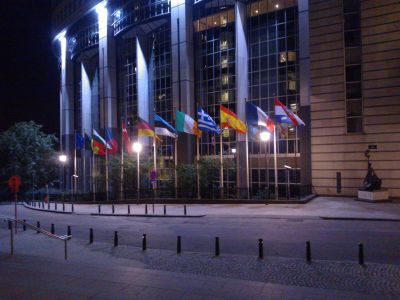10th January, 2014

Image Credit: James Lees
Following ICAO’s Assembly in autumn 2013, the European Commission proposed scaling back the coverage of aviation’s inclusion in the EU emissions trading system (ETS) to emissions within EU airspace only. Changes to the emissions trading scheme will involve modifying the Directive that enshrines it in law.
Changes to the Directive can only be made through a co-decision process involving the Council and the European Parliament, and so member states and MEPs are in the process of considering their responses and possible amendments to the Commission’s proposal. In the Parliament, the proposal is being examined by the Environment Committee (known as ENVI), but the Transport Committee (TRAN) and the Industry, Research and Energy Committee (ITRE) are also providing input. Voting on the ITRE and TRAN positions is due to take place on the 23rd January, with the ENVI vote scheduled for the 30th January.
The draft ENVI position reluctantly acknowledges the need to retreat to airspace but does seek to improve the effectiveness by suggesting a progressively tighter cap. However, the Parliament appears to be on a collision course with the Council, as many member states, led by the UK, Germany and France, fear that an airspace approach will not be enough to overcome the criticism of the ETS made by China, India, Russia, the US and others, many of whom have threatened non-compliance. Instead the UK, France and Germany have put forward a proposal to limit the ETS even further to intra-EU flights only until at least 2016 and possibly out to 2020. Discussions between the Council and the Parliament are under pressure to find a compromise by the end of March.
Other news on the EU ETS
In December, campaigning organisation Sandbag released a report on aviation in the EU ETS which looked at the emissions reported in 2012 – the first year that aviation was included in the scheme. The report (available here) found that 54 million tonnes of CO2 were reported by around 1000 operators over the year. The most interesting findings of the were report were that some big airlines and freight carriers ended 2012 with a windfall from a surplus of free allowances of carbon credits. A more in-depth digest of the report is available on Green Air Online.
